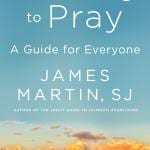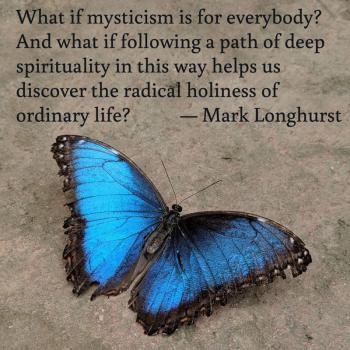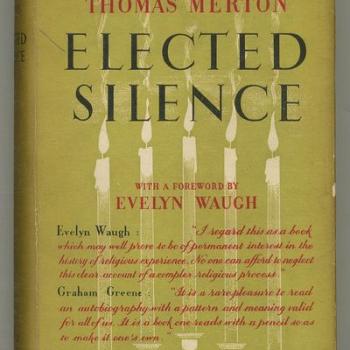Centering Prayer is a contemporary method of Christian spiritual practice that is based on teachings from ancient Christian mystics. It is based on a recognition of silence and stillness as doorways into prayer and intimacy with God.
The Method of Centering Prayer
Centering Prayer is, properly speaking, not a form of contemplative prayer, but rather a method of prayer that helps the praying person to prepare and consent to the gift of contemplation. It is a method of prayer that fosters interior silence and stillness: a prayerful way of responding to the call of the Psalms: “Be still and know that I am God” (Psalm 46:10).
The method of centering prayer involves four simple guidelines. These guidelines were developed by Thomas Keating and the leadership of Contemplative Outreach International; you can find them summarized on their website at www.contemplativeoutreach.org/centering-prayer-method/.
First, Choose a sacred word as the symbol of your intention to consent to God’s presence and action within. Consider using a word of just one or two syllables, such as: God, Jesus, Abba, Love, Grace, Peace — any word that represents your intention to consent to God’s presence and action within.
The second guideline: Sitting comfortably and with eyes closed, settle briefly and silently introduce the sacred word as the symbol of your consent to God’s presence and action within. Eastern spiritual traditions typically emphasize proper posture more than westerners traditionally have done. Still, this guideline provides a common-sense approach to established a relaxed-yet-alert posture, that will allow the person praying to remain comfortable for up to 20 or 30 minutes (the recommended time for Centering Prayer).
The third guideline is perhaps the most essential. When engaged with your thoughts, which can include body sensations, feelings, images, and reflections, return ever-so-gently to the sacred word. Notice that Centering Prayer does not instruct you to repeat your sacred word continuously, like a mantra. This is important. The sacred word is not the heart of the prayer: your consent to God’s presence and action is. Because you introduce the sacred word silently, you may find that the word itself drops away, leaving only silence. This is fine. Sooner or later, being human, distracting thoughts, feelings, etc. will pull your attention away from the spaciousness of the silence. This is normal. When that happens, and however often it happens, as soon as you notice that you are distracted, simply return your attention to the silent sacred word. Now, thoughts are arising in your mind like popcorn in a popcorn-popper, you may be returning to the sacred word more or less nonstop. But sooner or later, those graced moments of objectless silence will emerge. Even if they only last a millisecond, they can bring a sense of spaciousness and deep calm into your prayer… and then, sooner or later, another thought arises. So, the cycle repeats as you return ever-so-gently to the sacred word.
The fourth guideline functions as a type of coda to the Centering Prayer practice. Finally, At the end of the suggested twenty minute prayer period, remain in silence with eyes closed for a couple of minutes. So if you plan to devote twenty minutes to Centering Prayer, figure on spending 22-23 minutes or so in prayer, with those last couple of minutes simply a time of restful silence. Often that can be the sweetest moment in the prayer practice, so allow yourself to linger here.
Centering Prayer is recommended to be practiced daily — ideally twice a day, for 20-30 minutes in the morning and a similar amount of time in the evening. There’s nothing sacrosanct about that recommendation, but it follows the age-old practice of monks praying both in the morning and the evening.
Here’s a video I created for my friends at Contemplative Life/Transformation 365 as a guided practice of Centering Prayer.
For Further Exploration
Centering Prayer is the method of prayer taught by Contemplative Outreach International; for more information, visit their website. You can also learn much about the Centering Prayer method by reading these books:
- Thomas Keating, Invitation to Love
- Thomas Keating, Open Mind Open Heart
- Thomas Keating, Intimacy with God: An Introduction to Centering Prayer
- Cynthia Bourgeault, Centering Prayer and Inner Awakening
- Carl J. Arico, A Taste of Silence: A Guide to the Fundamentals of Centering Prayer
- M. Basil Pennington, Centering Prayer: Renewing an Ancient Christian Prayer Form
Is Centering Prayer Controversial?
If you look around online, you will find some websites where fundamentalist Christians, Catholic or Protestant, denounce Centering Prayer because they see it as a Trojan Horse: an attempt to deceive unwitting Christians into practicing a variation of Transcendental Meditation or Zen. Unfortunately, this idea is widespread enough that it deserves some comment.
It is true that on a superficial level, the method of Centering Prayer resembles TM (for example, both practices are commended to be done twice a day). It is also true that the earliest proponents of Centering Prayer promoted it as a Christian alternative to eastern forms of meditation. But it betrays a misunderstanding of Centering Prayer, which is rooted in centuries-old Christian teachings, to reduce it to just “Christianized T.M.”
I write this as someone who is comfortable with interspirituality and interfaith dialogue; but I think it’s important to have an accurate understanding that this is a uniquely Christian practice, clearly based on both ancient and medieval Christian teaching. Its similarities to eastern forms of meditation are due to the fact that meditation (like prayer) is a universal human experience, and not because a “foreign” practice was “imported” into Christianity. That idea is simply contrary to history.
If you’d like to read a book that quite eloquently describes how Centering Prayer is different from eastern forms of meditation, read Cynthia Bourgeault’s The Heart of Centering Prayer: Nondual Christianity in Theory and Practice.
Enjoy reading this blog?
Click here to become a patron.














